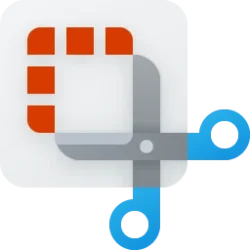Navigation
Install the app
How to install the app on iOS
Follow along with the video below to see how to install our site as a web app on your home screen.
Note: This feature may not be available in some browsers.
More options
Style variation
-
Disable Automatic Windows Updates in Windows 11
This tutorial will show you how to disable Windows Update from automatically downloading and installing updates in Windows 10 and Windows 11.- Brink
- Replies: 17
-
Use ViVeTool to Enable or Disable Hidden Features in Windows 11
This tutorial will show you how to use ViVeTool to enable or disable hidden features in Windows 10 and Windows 11.- Brink
- Replies: 49
-
Restore Classic File Explorer with Ribbon in Windows 11
This tutorial will show you how to restore the classic File Explorer with Ribbon for your account or all users in Windows 11.- Brink
- Replies: 422
-
Create Windows 11 Bootable USB Installation Media
This tutorial will show you how to create a bootable USB flash drive used to install Windows 11 with UEFI support.- Brink
- Replies: 135
-
Uninstall or Reinstall Copilot app
This tutorial will show you different ways to uninstall or reinstall the Copilot app for your account or all users in Windows 10 and Windows 11.- Brink
- Replies: 0
-
Add or Remove "Learn about this picture" Desktop icon
This tutorial will show you how to add or remove the "Learn about this picture" desktop icon when using Windows Spotlight as your desktop background for your account in Windows 11 and Windows 10.- Brink
- Replies: 27
-
Use SFC to Repair System Files in Windows 11
This tutorial will show you how to run the System File Checker (SFC) tool to repair missing, corrupted, and modified system files in Windows 10 and Windows 11.- Brink
- Replies: 25
-
Download Official Windows 11 ISO file from Microsoft
This tutorial will show you how to download an official Windows Server ISO or Windows 11 64-bit or ARM64 ISO file from Microsoft.- Brink
- Replies: 430
-
Repair Install Windows 11 with an In-place Upgrade
This tutorial will show you how to do a repair install of Windows 11 by performing an in-place upgrade without losing anything.- Brink
- Replies: 339
-
Clean Install Windows 11
This tutorial will show you step by step on how to clean install Windows 11 at boot on your PC with or without an Internet connection and setup with a local account or Microsoft account.- Brink
- Replies: 245
You are using an out of date browser. It may not display this or other websites correctly.
You should upgrade or use an alternative browser.
You should upgrade or use an alternative browser.
Tutorials
Windows 11 tutorials, tricks, tips, and guides.
This tutorial will show you how to manually delete all or specific Recall snapshots for your account in Windows 11.
Starting with Windows 11 build 26120.2415 (Dev) and build 26100.3902 (RP) on Snapdragon-powered Copilot+ PCs, you can try out the Recall (Preview) feature.
Starting with Windows 11 build 26120.2510 (Dev), Microsoft is expanding the preview of Recall to Windows Insiders on AMD and Intel-powered Copilot+ PCs.
Recall was introduced earlier this year, with the ability to enable you to quickly find and jump back into what you have seen before on your PC. You can use an explorable timeline to find the content you remember seeing before. You can also use semantic powered search and just describe how you remember something and...
This tutorial will show you how to suspend (pause) or resume BitLocker protection for a drive encrypted by BitLocker or Device Encryption in Windows 10 and Windows 11.
Device Encryption is a Windows feature that enables BitLocker encryption automatically for the Operating System drive and fixed drives. When you first sign in or set up a device with a Microsoft account, or work or school account, Device Encryption is turned on and a recovery key is attached to that account. If you're using a local account, Device Encryption isn't turned on automatically. Unlike BitLocker Drive Encryption, which is available on Windows Pro, Enterprise, or Education editions, Device Encryption is available on a wider range of devices, including those...
This tutorial will show you how to change the maximum system storage duration limit for Recall snapshots to be deleted for your account, specific users, or all users in Windows 11.
Starting with Windows 11 build 26120.2415 (Dev) and build 26100.3902 (RP) on Snapdragon-powered Copilot+ PCs, you can try out the Recall (Preview) feature.
Starting with Windows 11 build 26120.2510 (Dev), Microsoft is expanding the preview of Recall to Windows Insiders on AMD and Intel-powered Copilot+ PCs.
Recall was introduced earlier this year, with the ability to enable you to quickly find and jump back into what you have seen before on your PC. You can use an explorable timeline to find the content you remember seeing before. You can also use semantic...
This tutorial will show you how to change the maximum system storage size allowed to be used for Recall snapshots for your account, specific users, or all users in Windows 11.
Starting with Windows 11 build 26120.2415 (Dev) and build 26100.3902 (RP) on Snapdragon-powered Copilot+ PCs, you can try out the Recall (Preview) feature.
Starting with Windows 11 build 26120.2510 (Dev), Microsoft is expanding the preview of Recall to Windows Insiders on AMD and Intel-powered Copilot+ PCs.
Recall was introduced earlier this year, with the ability to enable you to quickly find and jump back into what you have seen before on your PC. You can use an explorable timeline to find the content you remember seeing before. You can also use semantic...
This tutorial will show you how to turn on or off sending optional app and website filter data to Microsoft to help improve Recall snapshots filtering for your account in Windows 11.
Starting with Windows 11 build 26120.2415 (Dev) and build 26100.3902 (RP) on Snapdragon-powered Copilot+ PCs, you can try out the Recall (Preview) feature.
Starting with Windows 11 build 26120.2510 (Dev), Microsoft is expanding the preview of Recall to Windows Insiders on AMD and Intel-powered Copilot+ PCs.
Recall was introduced earlier this year, with the ability to enable you to quickly find and jump back into what you have seen before on your PC. You can use an explorable timeline to find the content you remember seeing before. You can also use...
Privacy and Security Enable or Disable Filter Sensitive Information on Recall Snapshots in Windows 11
This tutorial will show you how to turn on or off "Filter sensitive information" on Recall snapshots for your account in Windows 11.
Starting with Windows 11 build 26120.2415 (Dev) and build 26100.3902 (RP) on Snapdragon-powered Copilot+ PCs, you can try out the Recall (Preview) feature.
Starting with Windows 11 build 26120.2510 (Dev), Microsoft is expanding the preview of Recall to Windows Insiders on AMD and Intel-powered Copilot+ PCs.
Recall was introduced earlier this year, with the ability to enable you to quickly find and jump back into what you have seen before on your PC. You can use an explorable timeline to find the content you remember seeing before. You can also use semantic powered search and just describe how you...
This tutorial will show you how to enable or disable "shields up" mode in Windows Firewall to quickly "Block all incoming connections, including those in the list of allowed apps" on your Windows 10 or Windows 11 PC.
Windows Firewall or Microsoft Defender Firewall is a security feature that helps to protect your device by filtering network traffic that enters and exits your device. This traffic can be filtered based on several criteria, including source and destination IP address, IP protocol, or source and destination port number. Windows Firewall can be configured to block or allow network traffic based on the services and applications that are installed on your device. This allows you to restrict network traffic to only those...
This tutorial will show you how to run the TPM Troubleshooter in Windows 11.
The TPM Troubleshooter is no longer available in Windows 11 24H2. However, the Windows Security page will still show any issues found with the TPM.
Windows 11 requires a Trusted Platform Module (TPM) version 2.0 or higher.
Trusted Platform Module (TPM) technology is designed to provide hardware-based, security-related functions. A TPM chip is a secure crypto-processor that is designed to carry out cryptographic operations. The chip includes multiple physical security mechanisms to make it tamper resistant, and malicious software is unable to tamper with the security functions of the TPM.
If your trusted platform module (TPM) isn't working properly you may...
This tutorial will show you how to enable or disable non-critical virus & threat protection notifications from Windows Security for all users in Windows 10 and Windows 11.
The Notifications page of Windows Security settings lets you configure what kind of notifications you want to receive.
The Virus & threat protection notifications below are purely informational and none of them require immediate action from you. You'll always receive notifications when there's a problem that requires immediate action. The settings on this page simply let you specify whether you want to know things such as that a threat was successfully blocked, or that a malware scan completed uneventfully.
Recent activity and scan results
Threats found, but no...
Privacy and Security Enable or Disable System Guard Secure Launch for Firmware Protection in Windows 11
This tutorial will show you how to enable or disable Microsoft Defender System Guard Secure Launch for firmware protection in Windows 10 and Windows 11 Secured-core PCs.
Microsoft has worked with OEM partners to offer a special category of devices called Secured-core PCs. The devices ship with additional security measures enabled at the firmware layer, or device core, that underpins Windows. Secured-core PCs help prevent malware attacks and minimize firmware vulnerabilities by launching into a clean and trusted state at startup with a hardware-enforced root of trust. Virtualization-based security comes enabled by default. And with built-in hypervisor protected code integrity (HVCI) shielding system memory, Secured-core PCs ensure that...
This tutorial will show you how to turn on or off device encryption on a Windows 11 PC.
Device encryption is a Windows feature that enables BitLocker encryption automatically for the Operating System drive and fixed drives. It’s particularly beneficial for everyday users who want to ensure their personal information is safe without having to manage complex security settings.
When you first sign in or set up a device with a Microsoft account, or work or school account, Device Encryption is turned on and a recovery key is attached to that account. If you're using a local account, Device Encryption isn't turned on automatically.
Unlike BitLocker Drive Encryption, which is available on Windows Pro, Enterprise, or Education editions...
Latest Tutorials
-
-
-
Browsers and Mail Create AI Generated Theme for Microsoft Edge in Windows 11
- Started by Brink
- Replies: 0
-
-
Network and Internet Change Preferred Band for Wi-Fi adapter in Windows 11
- Started by Brink
- Replies: 0
-
-
Browsers and Mail Enable or Disable Extensions from Other Stores in Microsoft Edge on Windows 11
- Started by Brink
- Replies: 0
-
-
-
Tutorial Tags
android
background
battery
bitlocker
bluetooth
boot
color
context menu
copilot
defender
desktop
display
drive
edge
file explorer
folder
hyper-v
icon
keyboard
location
mouse
notepad
notifications
onedrive
outlook
paint
pen
photos
pointer
power
printer
recall
screenshot
search
settings
share
shortcuts
sign-in
sound
start menu
store
taskbar
terminal
theme
touch
usb
voice
wi-fi
widgets
xbox




















